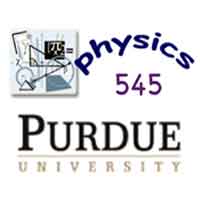Lecture 20: Landau Theory of Phase Transitions; Oil, Water, and Alloys
Now that we know what order parameters are (see last lecture), we'll use the order parameter of a phase to construct the Landau free energy. The Landau free energy depends on the order parameter, and retains all the symmetries of the physical system. It's amazing how much you can get from symmetry, and we're able to see how it is that a ferromagnet can have what's called a continuous phase transition. That is, starting from zero temperature with a saturated magnetization, upon raising the temperature, the magnetization slowly decreases, until it has smoothly (continuously, in fact) gone to zero. This makes it a continous transition. We also show what a first order (discontinuous) phase transition would look like. First order phase transitions can exhibit supercooling and superheating. We also discuss the physics of alloys like bronze, and under what conditions two different materials will mix and form a binary mixture, and under what conditions there will be phase separation into 2 distinct concentrations, as happens with oil and water. A small concentration of impurities is always favorable according to entropy, and will always mix. But larger concentrations may "fall apart" and phase separate.
Class discussions: Lots about supercooling and superheating. More about nonequilibrium behavior like window glass.
Lecture Audio
Class discussions: Lots about supercooling and superheating. More about nonequilibrium behavior like window glass.
Lecture Audio

